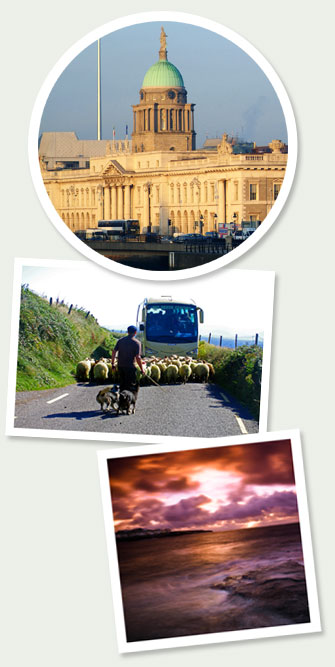
|
Following last month’s analysis by the Irish Tourist Industry Confederation (ITIC) of overseas tourism into Ireland in 2016, we now take a look at travel and tourism habits of Irish residents as per data published by the Central Statistics Office this month. Irish people’s desire to travel and holiday both at home and abroad continued to perform strongly in 2016 with a 5th year of consecutive growth.
Demand for out of state travel and corresponding expenditure outpaced growth in demand for domestic travel in 2016. Irish resident took 8% more trips out of state, with spending up 9% compared to a 2% increase in the number of domestic trips and a 3% increase in expenditure. However, domestic holiday demand proved to be more buoyant with a 4% increase in the number of trips and a 5% increase in expenditure compared to only a 1% increase in the number of holidays taken outside the country and a 3% increase in spend.
Quick summary
Domestic travel continued to grow in 2016 The total number of trips taken by Irish residents last year reached 9.3 million, representing 157,000 more trips than in the previous year. Expenditure on domestic trips reached €1.78 billion, €50 million more than in the previous year. The total number of nights spent away from home is estimated at 25.4 million, a 1% increase compared to a year earlier. The holiday demand proved to buoyant with 4.8 million holiday/leisure trips taken, up 3.7% on 2015, with expenditure at €1.12 billion up 5%. Total nights spent on domestic leisure trips is estimated at just over 15 million, a 2% increase on the previous year, with the average length of holiday trip at 3.1 nights. The number of trips to visit friends and relatives, at 3 million, was 4% ahead of the previous year, with expenditure down marginally to €295 million despite a 5% increase in the number of nights to 7.2 million. Business travel was up 4.4% to an estimated 425,000 trips. Associated expenditure at €105 million was up 7% and bednights up 12% to an estimated 752,000. The number of trips for other reasons, including education, sporting events, medical and seeking employment, fell by 13% to 994,000, with expenditure down 3% to an estimated €253 million. The average length of trip in 2016 was down from 2.8 to 2.7 nights. Holiday trips averaging 3.1 nights down from 3.2, while the average length of business trips showed an increase from 1.6 to 1.8 nights. The average length of trips taken for those visiting friends and relatives (VFR) was unchanged at 2.4 nights. The internet continues to be the method of choice when making accommodation reservations accounting for almost three out of every four (72%) reservations in Q4 2016.
Just short of two out of every three euros spent on domestic travel came from holiday or leisure trips, generating €1.12 billion, €54 million more than a year earlier. VFR trips accounted for 16% of total spend, estimated at €295 million, marginally down on the previous year. Business trips expenditure at €105 million accounted for 6% share of the total, while expenditure on trips for other reasons at €253 million represented a 14% share.
39% of domestic trips used hotel accommodation, with 35% staying with friends and relatives in 2016. Of the 25.4 million bednights spent away from home, just over one third (34%) were spent with friends and relatives, while 28% were spent in hotels. The absolute number of nights spent in hotels showed little change on the previous year, with the sector’s share slipping marginally. Guesthouses/B&Bs saw a drop in domestic demand in 2016. While the incidence of use of self-catering or rental accommodation increased last year, the number of nights declined accounting for 15% of all bednights. Own holiday homes were used on 5% of trips accounting for almost 9% of total bednights.
The average length of stay in hotels was 1.9 nights, unchanged from previous years, while the average stay in rented accommodation was 4.4 nights, down from 4.7. Stays with friends and relatives averaged 2.6 nights, unchanged. Where Irish residents stayed within Ireland during 2016 is not contained in the CSO data. This information is due to be published by Fáilte Ireland later this year.
Quick summary
Outbound travel continued to grow in 2016 Irish residents made 7.65 million outbound trips spending €6.5 billion on almost 57 million nights spent out of the country. Demand for foreign travel increased by an estimated 8% or approximately 550,000 more trips than in the previous year, while expenditure rose by 9%. The growth in demand appears to have been driven by travel for reasons other than holiday. The average length of trip was 7.4 nights down marginally from 7.5 the previous year.
The vast majority of trips were to other European countries, an estimated 6.7 million trips last year, with 490,000 trips to North America and a further 415,000 to destinations further afield. Travel to destinations outside Europe appears to have grown in 2016, a reversal of the performance in 2015.
The analysis in this report is based on the latest CSO data compiled from the national Household Travel Survey (HTS) collected by the CSO by means of a monthly postal survey - Household Travel Survey Q4 and Year 2016 (April 07, 2017). Methodological Changes have been introduced and data from Q1 2012 has been revised by the CSO. Hence the data series 2012-2016 will not correspond to data previously published in recent years. Details of the methodogical changes and the extent of the revision, together with further data compiled from the HTS survey, can be found by CLICKING HERE |
|
|||||||||||||||||||||||||||||||||||||||||||||||||||
|
||||||||||||||||||||||||||||||||||||||||||||||||||||




























